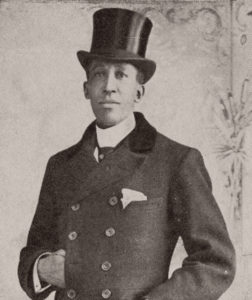September 1850 (170 years ago)
Jenny Lind, the “Swedish Nightingale,” arrives from Sweden in the United States, sponsored by P. T. Barnum and preceded with a tremendous publicity push that means she is already a celebrity. For two years, she will tour the U.S., greeted by rapturous audiences, and make around $500,000, the equivalent of over $14 million in 2020 currency. On tour, she will hire the pianist and composer Otto Goldschmidt to accompany her, and the two will quietly marry in Boston. Lind will go on to donate most of the profits from her U.S. tour to charities, establishing free schools throughout Sweden.
September 1880 (140 years ago)
Prolific Harlem Renaissance poet, playwright, and columnist Georgia Douglas Johnson is born in Atlanta. As a mixed-race writer (Black, Native American, and English), Johnson will explore the issues of race and womanhood and examine the inconsistencies of what is deemed American. In particular she will detail the contradictions between Christian teachings and the ways many white Christians treat Black and other marginalized folks. She will be a key activist in the anti-lynching movement of the 1930s, penning half a dozen plays while working with the NAACP.
September 1890 (130 years ago)

After success in Massachusetts, The Creole Show opens at the London Theatre in New York City, produced by Sam T. Jack. The show was probably conceived of by its star, Black performer Sam Lucas, who was looking to expand opportunities for Black performers. The Creole Show will go on to be one of the most popular burlesque and sketch shows of the day. While still entrenched in racist stereotypes, The Creole Show will be considered by historians as the beginning of a shift away from minstrelsy. The production employs a cast of light-skinned Black performers, launching the careers of such prominent figures as Bob Cole, Belle Davis, Mattie Wilkes, and Florence Hine. It will also further Sam Lucas’s own career; he will Lucas go on to be the first Black man to play Uncle Tom in Uncle Tom’s Cabin, a role often performed by white actors in blackface.
September 1905 (115 years ago)
George Pierce Baker teaches his first playwriting course, English 47, at Harvard University. His students will include Eugene O’Neill, Philip Barry, Thomas Wolfe, Hallie Flanagan, Sidney Howard, and S.N. Behrman. When Harvard will refuse to add a degree in playwriting, Baker will move to Yale and eventually found the Yale School of Drama in 1924.
September 1925 (95 years ago)
Dearest Enemy, the first musical by Rodgers and Hart, opens on Broadway starring Helen Ford. Based on truth, Dearest Enemy tells the story of Mary Lindley Murray, who purposefully stalled British troops during the Revolutionary War by throwing a ball while American troops could assemble for a counterattack. Rodgers and Hart will go on to be one of the most successful duos in Broadway history in an age of immense growth for the musical theatre. In the same six-day period in September of 1925, three other major musicals open on Broadway: No, No, Nanette, The Vagabond King, and Sunny. This week epitomizes the fast pace of the form in the ’20s.
September 1930 (90 years ago)
International star Mei Lanfang finishes his 1930 U.S. tour, which began in New York City in February, with a 12-night run at Honolulu’s Liberty Theatre before returning to Beijing. Lanfang is a dan performer, playing female roles in the Beijing Opera tradition, and he is lauded both in China and on his international tours as one of the best performers of his day. Lanfang is widely credited as the first artist to perform Beijing Opera internationally, influencing a generation of theatremakers across the globe.
September 1965 (55 years ago)
President LBJ signs the National Foundation on the Arts and the Humanities Act of 1965 into law. From its inception, the NEA has been spurred by the tenacity and advocacy of theatre people endeavoring to widen their audiences amid a lack of funding. What emerged as a 30-year grassroots campaign to uplift the necessity of the arts is transformed into legislation and policy. Though the efficacy of continued funding for the NEA will become a perennial dispute, the impact of its grantmaking will be witnessed nationwide.
September 1975 (45 years ago)
Red Earth Performing Arts Company, one of the first Indigenous American theatre companies, opens Raven by Nick DiMartino, their first production, as part of their residency at Seattle University. Raven tells Native stories from the tribes of the Pacific Northwest and incorporates traditional Native performance styles. Founded by John Kaufman (Nez Pierce), Phyllis Brisson (Assinibione), Terry Tafola (Isleta/ Warm Springs), and Donald Matt, REPAC will go on to produce Body Indian and other influential Native plays for five years before disbanding.


